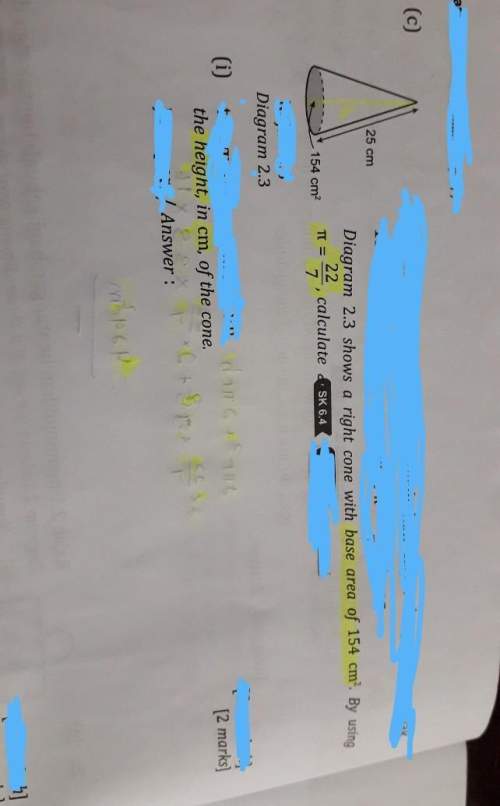
Mathematics, 07.03.2020 02:27 DiamondW8526
The graph represents the function f(x) = 10(2)x. On a coordinate plane, an exponential growth function approaches y = 0 in the second quadrant and goes through points (negative 1, 5), (0, 10), (1, 20), (2, 40). How would the graph change if the b value in the equation is decreased but remains greater than 1? Check all that apply.

Answers: 1
Another question on Mathematics

Mathematics, 21.06.2019 17:00
Mary beth used the mapping rule to find the coordinates of a point that had been rotated 90° counterclockwise around the origin. examine the steps to determine whether she made an error. m (3, –6) is rotated 90° counterclockwise. (x, y) → (–y, x) 1. switch the x- and y-coordinates: (6, –3) 2. multiply the new x-coordinate by –1: (6(–1), –3) 3. simplify: (–6, –3) .
Answers: 1

Mathematics, 21.06.2019 17:30
Subscriptions to a popular fashion magazine have gone down by a consistent percentage each year and can be modeled by the function y = 42,000(0.96)t. what does the value 42,000 represent in the function?
Answers: 2

Mathematics, 21.06.2019 19:30
Evaluate 3(a + b + c)squared for a = 2, b = 3, and c = 4. a. 54 b. 243 c.729 add solution .
Answers: 1

Mathematics, 21.06.2019 19:30
Hi, can anyone show me how to do this problem? 100 points for this. in advance
Answers: 2
You know the right answer?
The graph represents the function f(x) = 10(2)x. On a coordinate plane, an exponential growth functi...
Questions

Chemistry, 20.04.2021 15:50

Mathematics, 20.04.2021 15:50



Chemistry, 20.04.2021 15:50

Mathematics, 20.04.2021 15:50

Mathematics, 20.04.2021 15:50








Mathematics, 20.04.2021 15:50

Computers and Technology, 20.04.2021 15:50


Mathematics, 20.04.2021 15:50


Biology, 20.04.2021 15:50




